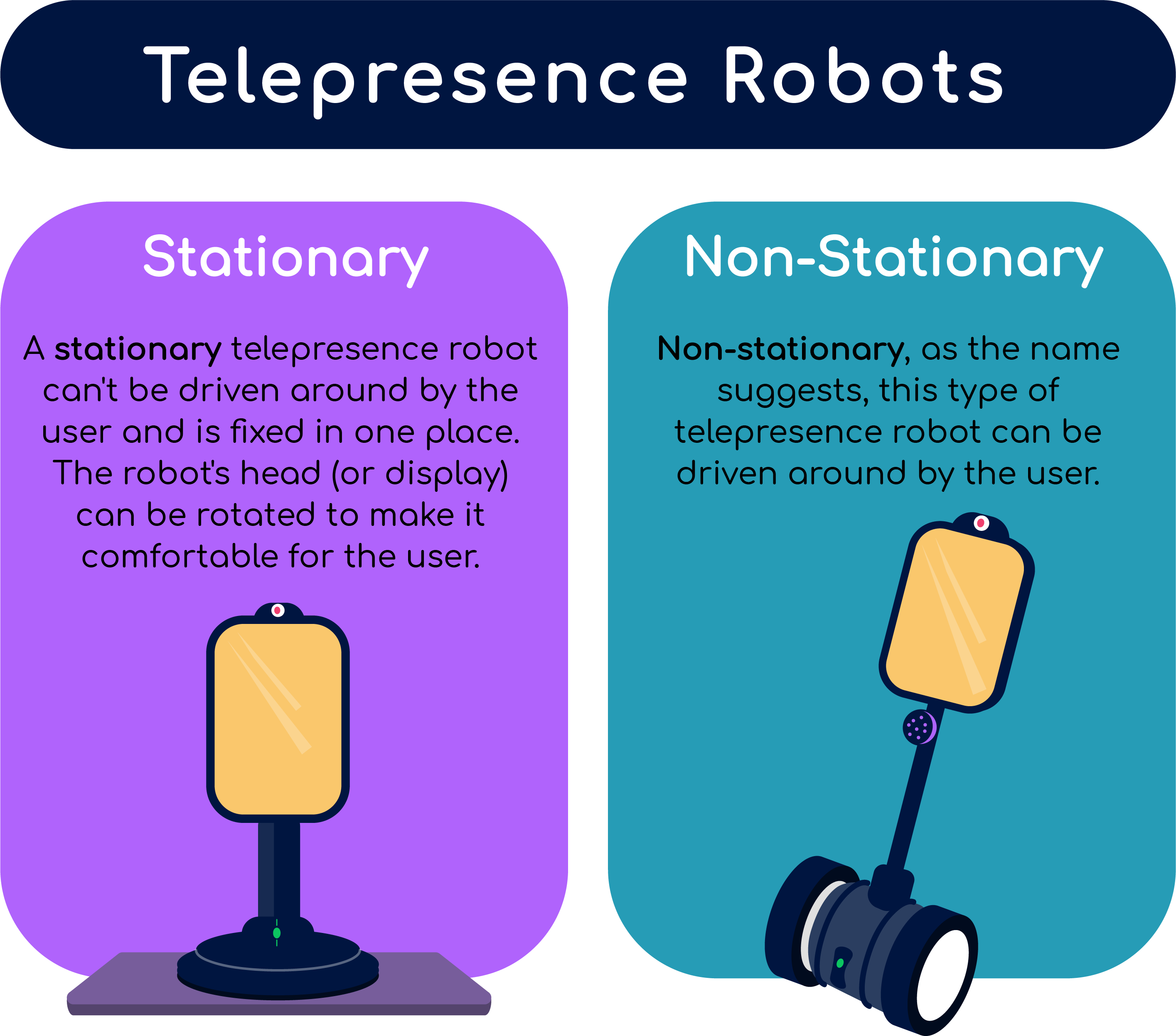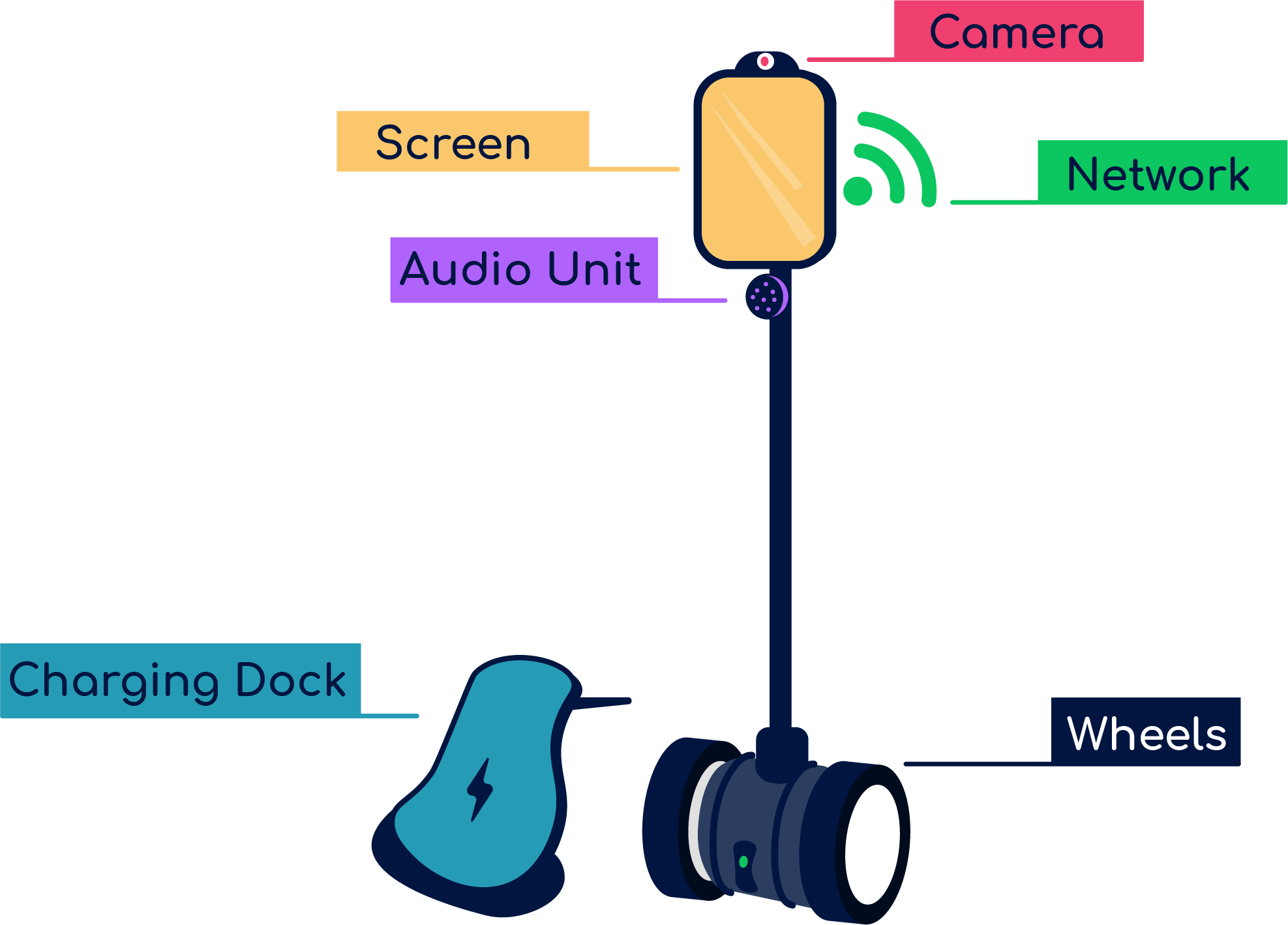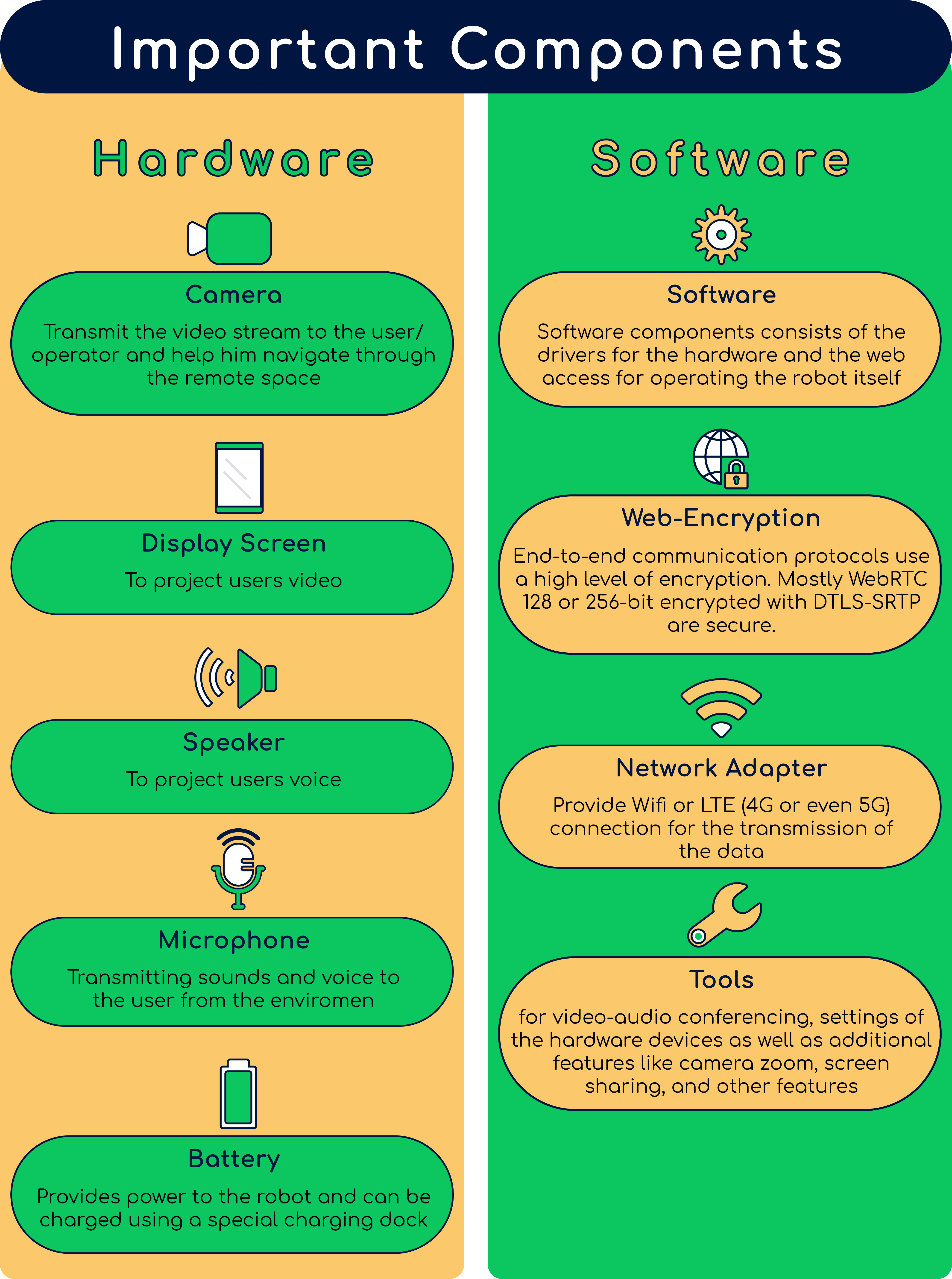What is a Telepresence Robot?
To explain what a telepresence robot is, let us first look at the definition of a robot and telepresence.
A robot is a machine that can perform a set of specific and more human-like tasks (e.g., lifting an object, serving food in a restaurant, etc.). They are mostly made to look like humans but lack emotional intelligence. The task assigned to a robot is programmed using a computer and given as an input(command) to the robot to perform.
Telepresence refers to technology that enables a person to perform actions in a distant or virtual location as if physically present in that location [1].
A telepresence robot is a device that transports a person virtually to another location. It makes a person’s presence felt even though the person might not be physically present. A robot typically consisting of a motorized stand with a mounted screen that streams audio and video of someone in a remote location so that person can participate in a teleconference while piloting the movement of the robot [2].
What is the advantage of a telepresence robot?
A telepresence robot has various advantages, and they depend on the different use cases. For example, it helps save money as people don’t have to travel significant distances, which allows CO2 emissions to be reduced from not taking a flight.
The significant advantage is that it provides accessibility with the feeling of being physically present. Anyone can join a meeting virtually (e.g., Zoom, Microsoft Teams, etc.) but joining that meeting virtually through a human-like body makes the user feel physically present. Users can control the robot’s movement and interact with various people as they go around a place (e.g., an office) like they would if they were physically in that place.
Being equipped with displays, speakers, microphones, cameras, and various other features (depending on the multiple robots in the market), telepresence robots are a revolutionary concept in the field of virtual interaction. They are a sense of extension of the user’s presence.
Types of telepresence robots
There are two types of telepresence robots, stationary and non-stationary.

Components of a Telepresence Robot


How much does a telepresence robot cost and what models are available?
There are several TR models available in different price categories. The cost of telepresence robots varies due to the varying features. Prices may differ due to the costlier hardware features (e.g., better camera and a display screen). To have a general idea, they start from about 1000 € and can go up to 10,000 €. A good overview with the possibility to compare models is provided by this page: https://telepresencerobots.com/comparison
How to use a telepresence robot?
Different companies have a different user interface, though the basic is the same for all. The user usually receives an ID and password to log in to the website (or an app) through which they access the robot. Once logged in, the system shows the details of the robot(e.g., battery, location, etc.), onto which the user clicks and starts to stream their video. The robot can be moved around using the arrow keys or the mouse. Controls can be chosen depending on the user’s comfort and the options provided by the various companies. Depending on the camera quality, the user can also view the surroundings and zoom to look at objects the robot cannot possibly see.
Images below are an example of user experience. 1) The screenshot shows the login screen into the Ohmilabs cloud-based management system. 2) The screenshot shows the available robots that can be operated.


The following video by OhmniLabs gives insights into the use of Ohmni telepresence robot (video embedded courtesy of OhmniLabs):

References:
[1] https://www.merriam-webster.com/dictionary/telepresence
[2] https://www.dictionary.com/browse/telepresence-robot
Credits Illustrations: Constantin Kraus
Do you have more questions about Telepresence Robots? Visit our TRinE Glossary!
